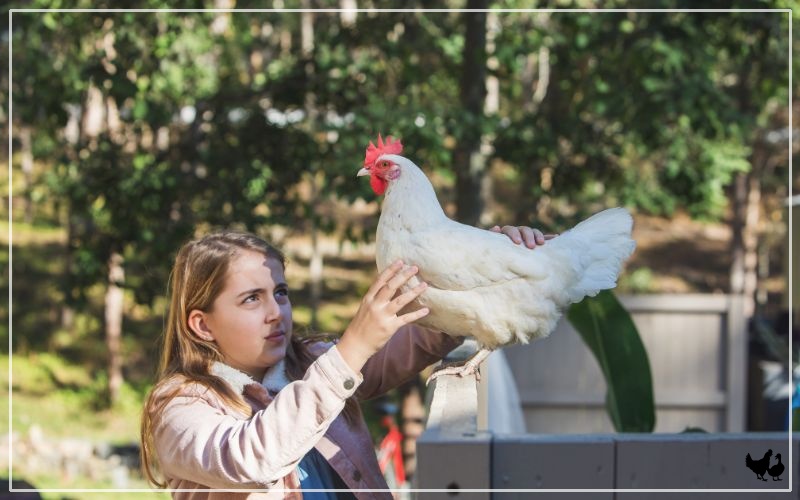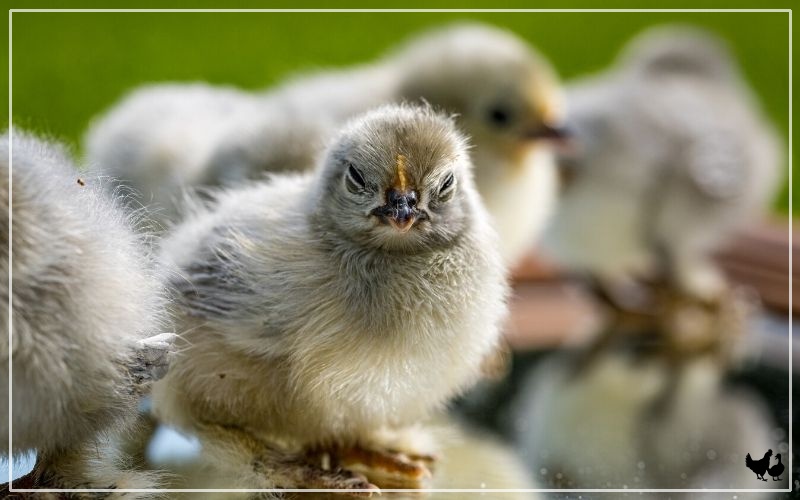Australorp Chickens – Breed Profile & Facts
When it comes to rearing chicken, there are more than enough breed options out there. Still, not every breed you go for is an excellent investment. This is why you ought to take your time to select a breed that best suits your budget and lifestyle.

Touted as the best option for anyone venturing into profitable backyard farming, the Australorp breed has been gaining popularity far and wide. In fact, many people consider Australorp a leader in egg and meat production.
Want proof? Here’s every important thing you need to know about Australorp before investing your time and money into this breed of chicken:
Australorps History
The Australorp breed came about in the early 1900s and just as its name suggests, it originated in Australia. Back in the day, some farmers imported several Black Orpington chicken to Australia (from England) to cross with various Aussie chicken breeds.
The aim here was to improve the original Black Orpington breed used for meat as well as eggs and create a dual-purpose bird that’s well suited for the Australian climate.
To this end, Black Orpington birds were cross-bred with Rhode Island Reds, White Leghorn, Langshan, Minorcas, and Plymouth Rocks (to a lesser degree). The result? A phenomenal egg layer that was originally known as the Australian Black Orpington.
In fact, around 1922 to 1923, six Australorps hens laid about 1,857 eggs, which is an average of 309.5 eggs per bird (over a 365 days period). Thereafter, many other egg-laying contests played out in the subsequent year where one hen laid 347 eggs in 365 days.
The current record stands at 364 eggs in just one year- a great achievement considering that the hens didn’t even have extra lighting.
As such, the poultry industry became much interested in Australorps and the birds got exported to England, the United States, and later the rest of the world. The Australorp breed remains an excellent egg layer today and is well-suited for the backyard environment.
Australorp Appearance
 Australorps are large, heavy birds featuring close-fitting, soft feathers that are lovely to touch. When in the sun, Australorp feathers tend to show subtle hints of unique colors like green and purple-quite a beautiful sights!
Australorps are large, heavy birds featuring close-fitting, soft feathers that are lovely to touch. When in the sun, Australorp feathers tend to show subtle hints of unique colors like green and purple-quite a beautiful sights!
In addition, the Australian Poultry Society recognizes this bird’s black, white, and blue varieties. However, the American Poultry Society only recognizes the Australorp’s original color (black) while South Africa has wheaten laced, splash, golden, and buff, on top of the other colors.
Not only that. Australorps have an upright stance and carry their tails high. What’s more, their breasts are full and well-rounded, while their combs, earlobes, and wattles are all red in color. Take note that the combs of Australorps are upright and have seven points (never more).
The legs of Australorps are clean of feathers and can be stated blue or black in color. In fact, each foot has four toes and a skin (at the bottom) that’s as white as the hen’s body skin. What else? The eyes feature a shiny jet-black color while the beak is dark.
It’s important to note that the standard-sized Australorp birds are pretty heavy, with males weighing 8.5 to 10lb, while the hens weigh 6.5 to 8lb.
Australorp Chicken Care
If you’re looking for hens that are easy to care for, will get along with your current flock, and lay many eggs, then the Australorp is your best choice. This breed of chicken is quite gentle and well-behaved.
Furthermore, these chickens may initially appear a bit shy but once they get used to a new environment, they’ll warm up and be extremely friendly as well as lovable barnyard companions.
And because they are a quiet and calm breed they may get bullied by more ‘pushy’ breeds. So be careful if you’ll be housing them together with more aggressive breeds. Here’s some other important info to keep in mind when caring for Australorps:
– Nutrition & Diet
Australorp chickens thrive when fed good quality food. This is why you ought to go out of your way to supply your birds with fresh, nutritious food. With this in mind, go for commercial or ready-made feeds, but never contaminated food. Above all, ensure to supply your hens with clean, fresh water as per the demand.
– Housing
Creating a safe and comfortable housing system is paramount when rearing Australorps. As such, try to build a house that suits your birds. Note- you can raise these chickens in both free-range and confined systems. For the latter, a 4-5 square feet space per bird will be adequate. But if you choose to go the free-range way, ensure to have more free space.
Also, the housing system should incorporate a good ventilation system to ensure a sufficient flow of light and fresh air. And remember to organize the house in such a way that one can easily clean it.
– Health Problems
Luckily, Australorps are extremely hardy and long-lived birds. Therefore, you don’t have to worry much about sickness as this breed has good resistance against common poultry diseases. Equally important, well-bred Australorps experience less physical deformities such as twisted beaks or bent toes. Not only that.
These chickens tend to adapt quickly to cold weather or low temperatures and will do well in virtually all kinds of climatic conditions. Still, taking additional care measures will ensure that your birds have excellent health and growth. So try to vaccinate your birds and have them checked by a vet regularly.
Australorp Egg Production
 If it’s not for its egg-laying capabilities, the Australorp wouldn’t be as popular as it is today. An average Australorp lays as many as 250-300 eggs per year. Though individuals may lay less or more, depending on the hen. Still, that number equates to about 5 light-brown, medium-sized eggs per week. Not too shabby, eh?
If it’s not for its egg-laying capabilities, the Australorp wouldn’t be as popular as it is today. An average Australorp lays as many as 250-300 eggs per year. Though individuals may lay less or more, depending on the hen. Still, that number equates to about 5 light-brown, medium-sized eggs per week. Not too shabby, eh?
The only time a young, healthy Australorp hen lays fewer eggs is when it’s taking a temporary bio-break or is probably stressed due to a change in the environment.
What’s more, unlike some chicken breeds, Australorps don’t hide their eggs or get restless when you collect them. As such, if you provide them with nesting boxes, they’ll religiously use them for egg-laying.
This breed also tends to naturally brood and hatch its eggs. So if you want a new batch of chicks, simply leave the roster around the hens and don’t collect their eggs regularly.
Equally important to note is that the Australorp time to achieve the desired five-pound broiler weight. So if you’re raising them for meat, ensure to plan adequately.
At What Age do Australorps Start Laying Eggs?
Australorps, like most chickens, begin laying eggs when they are around 6 months old. In the initial stages, you may notice that your hens are laying eggs randomly or misfiring with shell-less or malformed eggs. But they eventually settle down to deliver an average of one egg per day.
At around age two, you may notice that your hens are laying fewer eggs. This is natural. While younger hens can lay up to seven eggs per week, the older ones may produce only two in the same period. This is why many old Australorp hens end up as soup. Still, this breed can live up to 20 years when well cared for.
What is the Lifespan of Australorps?
The average Australorp has a life span of approximately 6-10 years. But as mentioned above, this breed can live longer when reared in the most suitable conditions.
Are Australorp Chickens Aggressive?
Consider this: Australorps are popular with pet lovers because of their peaceful and graceful demeanor. If you were to put them on a scale with other breeds, they’ll likely be in the middle tier.
This gentle-natured, docile breed tends to attach to their owners, following them around whenever they get the chance. Except for them to fit in well with the entire family, including your kids, thanks to their calmness and tameness.

White vs Black Australorps – What’s the Difference?
Also known as the Austra White, the white Australorp is a crossbreed of a White Leghorn hen and a Black Australorp Roster. Except for the white feathers (instead of black), this breed is quite different from the Black Australorp in that it lays large off-white/cream-colored eggs and not the light-brown medium-sized ones.
Also, the Austra White tends to be heavier than the Black Australorp. But it’s still an excellent egg layer just like its black counterpart. In fact, many enthusiasts believe that this breed is better than the Black Australorp because of its excellent feed to egg production ratio.
Conclusion
Australorps are an excellent choice for any beginner farmer. These friendly, easy-going chickens don’t require much special care and can adapt to any kind of weather. And the best part is that they aren’t noisy, flighty, or cold hardy. Meaning that they’ll make excellent flock mates if you have other breeds of chicken. What more could you wish for?
Even so, ensure to have enough space for the birds to move around if you’ll be keeping them in a confined system. Their heavy weight can easily translate to obesity if they don’t exercise enough. Bottom line- consider rearing Australorps today. You won’t regret it.



